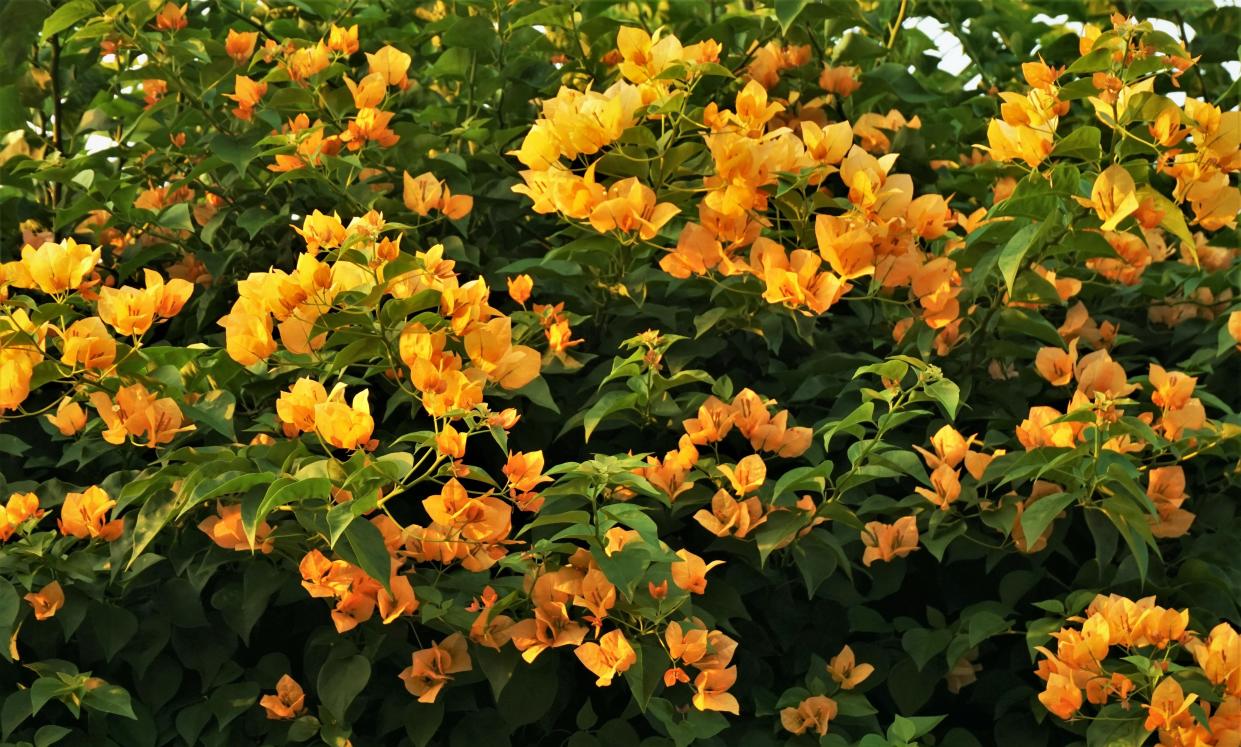Don’t learn Florida gardening the hard way

Casual gardeners use internet forums to chat about their experiences. I find these forums intolerable because so many accounts involve self-inflicted mishaps. Indeed, quite a few people seem to do their gardening while unencumbered by the thought process. It’s probably worse in Florida because plant lovers here — unlike their Northern brethren — can make mistakes year-round.
As I’ve mentioned for years, the most serious consequences arise from folks not doing basic research about the plants they purchase. Being unaware of a species’ growth rate, potential size, sun/shade preferences, drought tolerance, wind resistance, pest and disease susceptibilities — and even whether it’s deciduous or not — is a recipe for failure. Many of these stubbornly unenlightened gardeners claim they just don’t have a green thumb. But the trouble has nothing to do with thumbs.
On a different note, size really does matter in gardening. Numerous homeowners fall into the traps of making vegetable gardens too large and garden ponds too small. Vegetable patches produce considerably larger harvests than most folks realize — hence those ‘’too many zucchinis’’ jokes — while large ponds are vastly easier to maintain than small kit types.
That plant lovers are trusting souls is illustrated by how readily we’ll buy flowering plants that aren’t actually blooming. Most of the time there’s no issue, but — sooner or later — a crape myrtle or bougainvillea that was labeled as red-blossomed will produce flowers of a different color. No one’s trying to fool us: It’s simply an instance of labels getting mixed up somewhere along the line.
Speaking of mix-ups, I wonder if Robert Louis Stevenson was inspired to write ‘’Strange Case of Dr. Jekyll and Mr. Hyde’’ by watching gardeners install butterfly plants, only to spray them — or spray nearby — with pesticides. It’s like combining bird feeders with free-roaming cats.
Continuing the idea of poor choices — and I won’t even mention that abhorrent red-dyed mulch, which seems here to stay — there’s rubber mulch and rock mulch. Except for use in playgrounds, rubber mulch is an abomination. In our climate, it’s possible rubber mulches degrade and pollute the aquifer. Regarding rock mulches, they gradually sink into the soil, making future digging an expletive-laced chore.
Finally, although I believe everyone should garden to please themselves, trying to create a formal landscape in Florida is wrongheaded. It usually means excluding palms, tropical vines, banana trees and firecracker plants in favor of boxy shrubs and conical evergreens.
Charles Reynolds, a Winter Haven resident, has an associate’s degree in horticulture and is a member of Garden Writers Association of America. He can be reached at ballroom16@aol. com
This article originally appeared on The Ledger: CLIPPINGS

